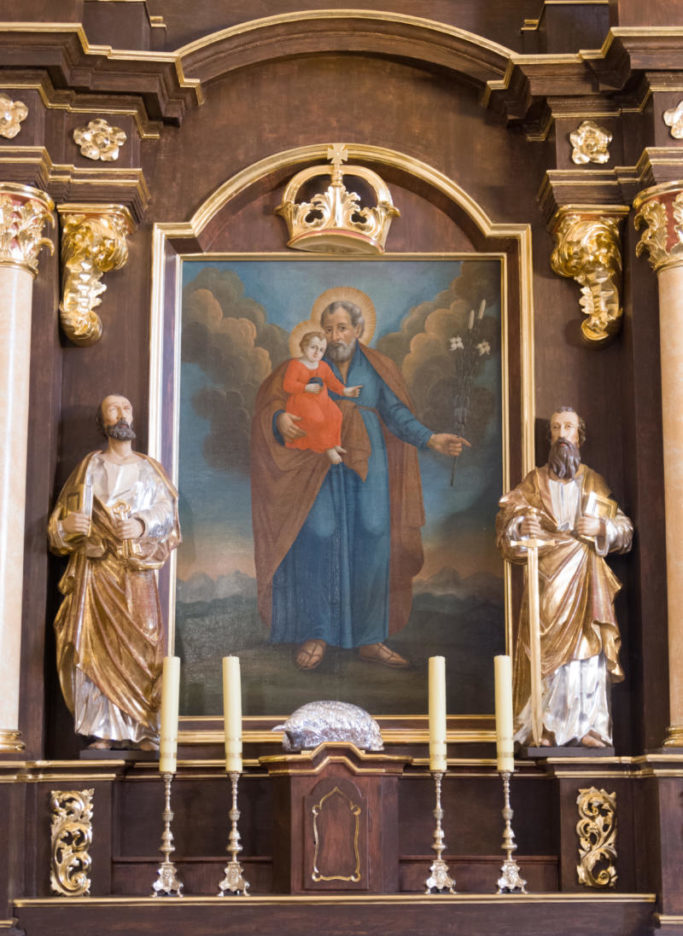
Church of St. Nicholas in Staw Kaliski
RENOVATION OF THE SIDE ALTAR OF THE MOTHER OF GOD FROM THE CHURCH OF ST. NICHOLAS IN STAW KALISKI
The architecture of the side altar of the Mother of God from the church of St. Nicholas in Staw Kaliski was made in neo-baroque style in 1870-1876, and the main painting with the image of the Mother of God with Child is dated for the first half of the 17th century.
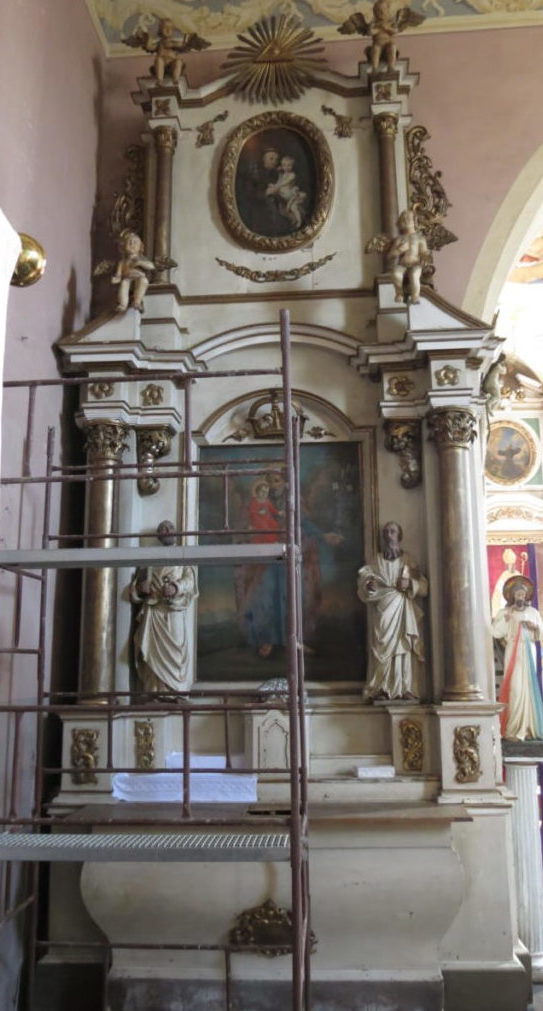
The general condition of the object was very bad, especially due to blackened layer of dirt on the surface of white repainting. Many losses of the woodcarved forms and sculptures, and metallization was visibly corroded. The altar was unoriginally repainted, including the decorative figures, the paintings were dirty and dark. Signs of woodboring beetle were noticed, wood was almost entirely degraded.
The direct cause of the renovation was a fast process of deterioration of the object. The main aim of renovation was prevention of decay by biological factors and physical and chemical processes, as well as ablation of repainting which deform the aesthetic reception of the altar. The final effect should constitute restoration of maximally complete historical and artistic values to all elements, thus recreation of its original appearance.
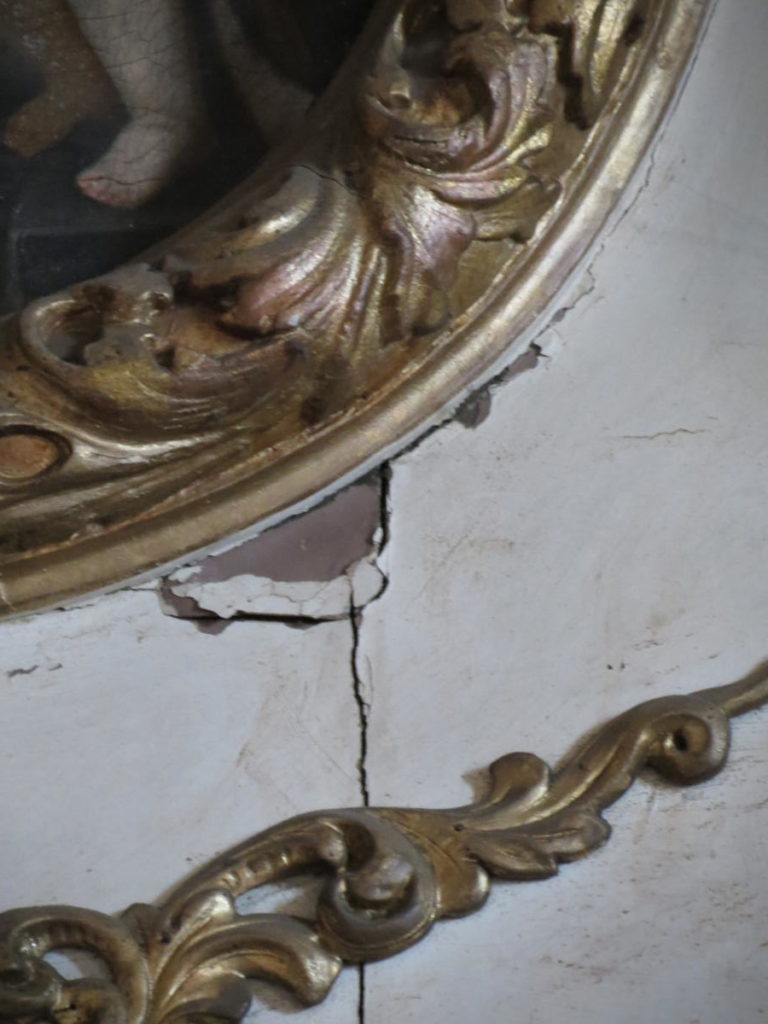

Before the proper renovation works, multipoint stratigraphic tests were done, the object’s condition as well as the range of original painting and gilding were estimated. The photographic and descriptive documentation of the object’s condition was made. Mere visual analysis showed topical loosening of the layer of paint, old, imprecisely processed putties, unoriginal repainting and metallization of originally gilded elements.

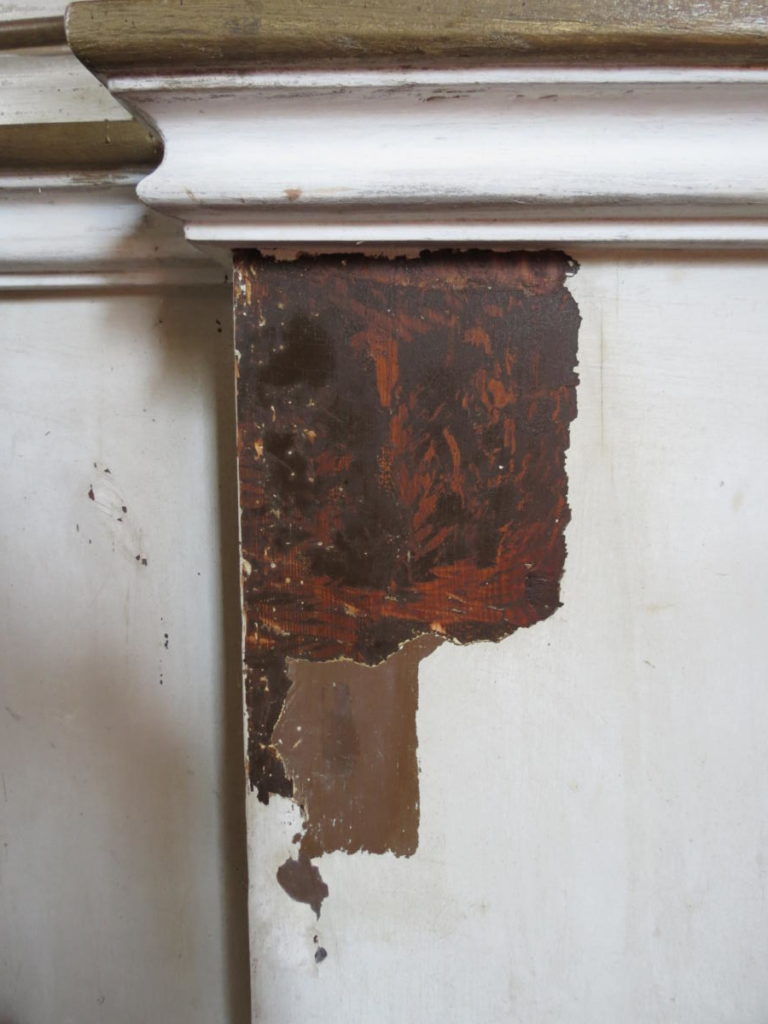


Renovation started with cleaning of the altar’s surface from dirt and dust. After cleaning, a preliminary sterilization of the object was done with an insecticide through jet grouting and brushing. Repainting of the surface of the altar’s architecture were removed, on the basis of conducted tests, with warm air. Repainted layers on the surface of gilding were ablated with solvent pastes washed with white spirit. Another sterilization was done with an insecticide. The procedure was done twice with a two-week break. Heavily damaged parts of wood were saturated with a solution of acrylic resin. Construction joints were repaired, unoriginal slats and plugs were reinforced by impregnation with resin, and new slats were attached to the back. Losses of wood were reconstructed and mounted in the places where the elements had been missing. Cracked woodcarved elements were glued together.
Consolidation of paint layer was done with hide glue. Cracks and big losses of wood were filled with epoxy resin. Wood surface and some losses of the layer of paint were levelled with acrylic putty.
Losses of the layer of paint were stippled with “small line” method, with acrylic paints. The reconstruction was made on the surface of the crowning and in the central paintings’ frame parts. Also marbleisation in ochre colour on the columns’ corpuses was reconstructed, and then they were covered with a layer of shellac.
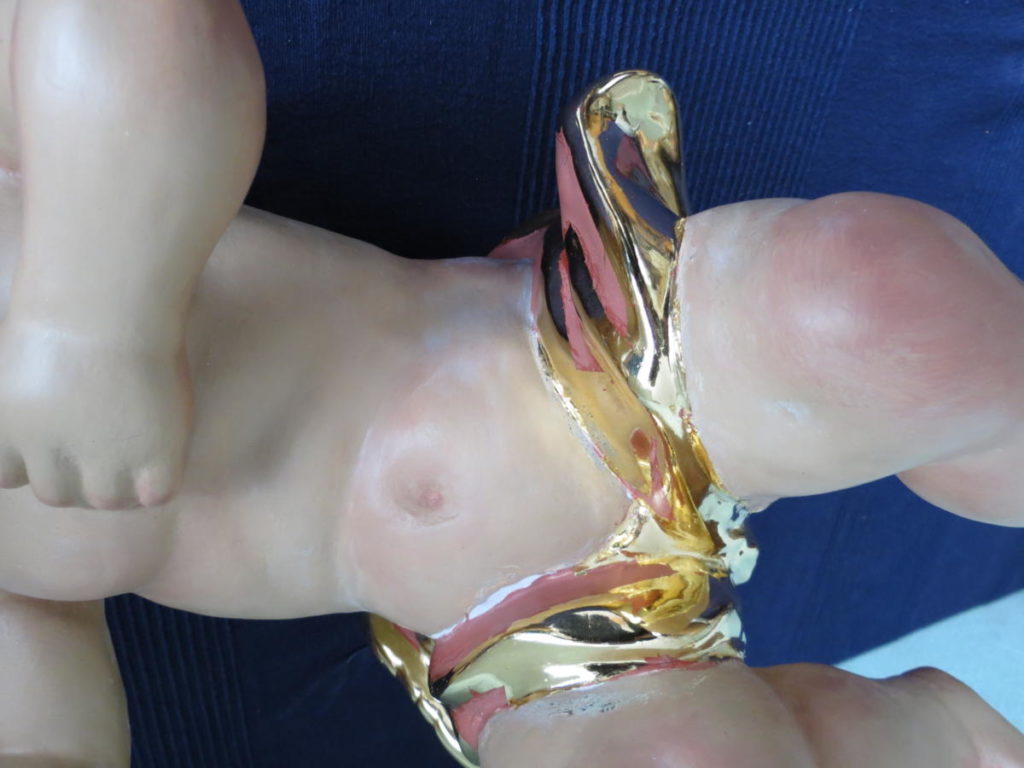

Gilding works were done with bole and 23 ¾ karat gold leaf with gloss and matt finish. Gilding with matt finish applied in easily accessible places was secured with shellac.
Renovation of the paintings was completed by guarding of the painting from the crowning of the altar dedicated to St. Anthony. The losses where putty was applied were stippled with drained oil paints. The surfaces were covered with varnish.
Finally, the altar was assembled in the church, the paintings were hanged and all mobile elements were mounted. Photographic and descriptive documentation of the renovation was completed.

